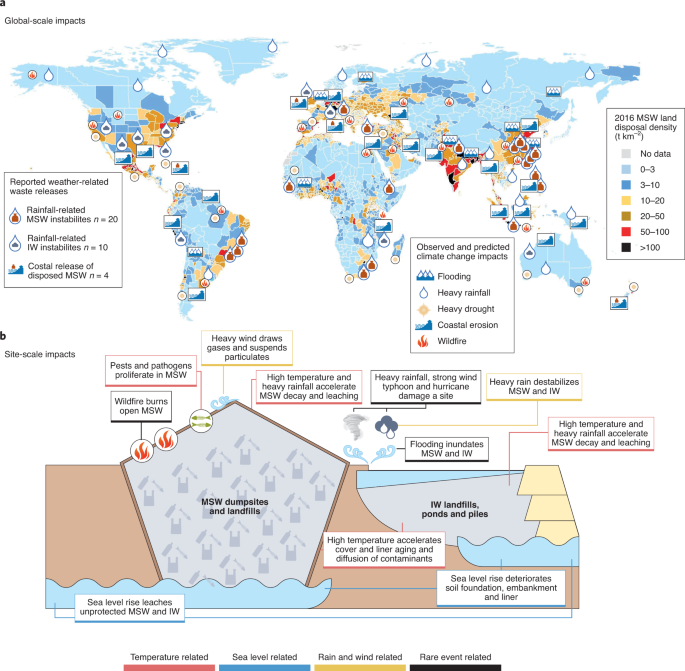Management of municipal solid waste (MSW) and industrial solid waste (IW) are indispensable functions in modern society. The main solid waste management options include recycling, incineration, recovery and land disposal. Land disposal remains the predominant management method, with land-disposed MSW accounting for >1.5 billion tonnes of the total ~2 billion tonnes of waste generated worldwide in 2016 (ref. 6). The global annual IW generated is estimated to be up to 18 times higher than the MSW6, although the amount of land-disposed IW is uncertain. Given the long history of waste disposal, hundreds of billions to trillions of tonnes of MSW and IW have been disposed in the environment. Due to the finite capacity and regionality of each site, >100,000 sites exist in Europe7; the total number of waste disposal sites worldwide is probably 300,000–500,000. There is a wide variety of solid wastes (biodegradable, leachable, suspendable and inert) and disposal sites (mismanaged dumpsites, sanitary landfills, impoundments and piles), all of which have complex responses to climate change.
https://www.nature.com/articles/s41558-021-01220-5
Climate change affects land-disposed waste
